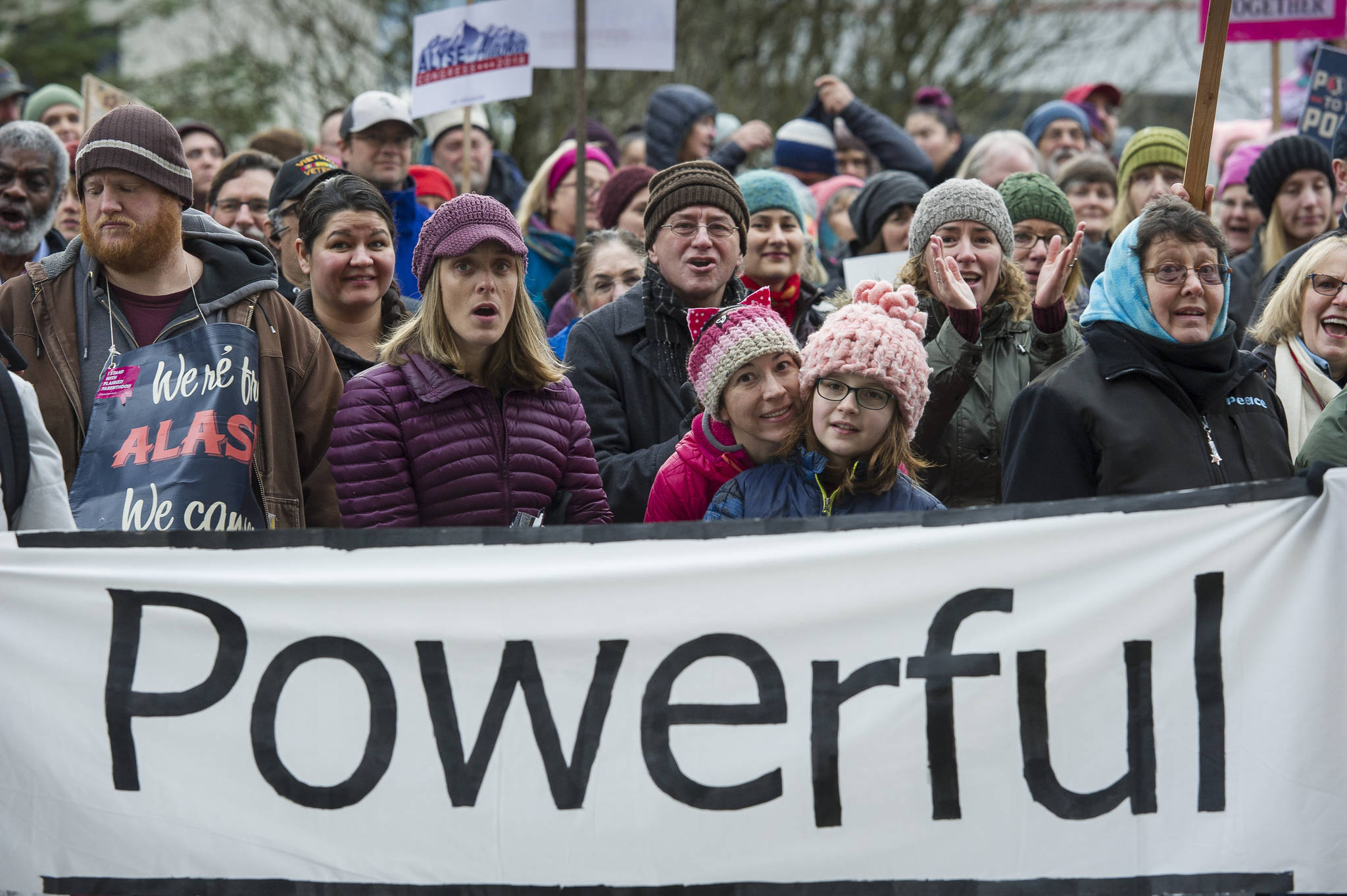One year in and the Women’s March is still going strong. I was privileged to be a speaker at the Women’s March in Juneau. At a thousand plus crowd, Juneau’s turnout equaled the first March. This was the case around the world where women marched in solidarity in more than 500 events across six continents over the weekend — from Wellington, New Zealand; to Seville, Spain; to Quito, Ecuador; and on to Anchorage. From looking at all the signs, the Women’s March is also expanding the slate of protest issues. From health care to immigration, from the environment to economic justice, the Women’s March is becoming a broader protest platform for “We the People.” The Women’s March is committed to “taking down the silos between issue areas, between identities, encouraging folks to organize together for a better impact,” said Bob Bland, one of the organizers.
In determining whether or not a movement has political legs or staying power it’s best to look at what happens in between the marches. Is there enough ongoing organizational activism to make the movement self-sustaining? One barometer of sustained activism is the record number of women now signing up to run for office. Emily’s List, an organization aimed at electing progressive women has experienced a meteoric rise in interest since the first Women’s March. In the four weeks after the 2016 election, 1,000 women came to the group’s website to learn about running for office. That number has now surpassed 26,000. By comparison, the group was in contact with 960 women for the previous election cycle. This rise of women interested in running for office is also playing out here in Alaska.
One organization that is an outgrowth of the Women’s March in Anchorage is “Alaska Women Ascend,” a political skills training program set up in May 2017 to elect progressive women in Alaska. Led by former State Representative Kay Brown, former State Senator Suzanne Little, former Anchorage Assembly member Jane Angvik, and Women’s March organizer Bhree Roumagoux, Alaska Women Ascend chose to focus not only on training women to run for office, but also to be campaign managers and treasurers. “We thought we might get 20-30 participants; we were amazed and delighted to receive applications from 82 women from many communities in Alaska,” noted Jane Angvik. The make-up of the participants, 57 percent Millennials and 45 percent women of color, serves as testament that the women’s march is also expanding the reach of political activism.
Here in Juneau, the Women’s March spurred the creation of ReSisters, a listserve that produces action alerts on issues ranging from health care to immigration, but in the context of Alaska and what it means to Alaskans. ReSisters started with about 30 engaged citizens. It grew rapidly, and after this Saturday’s march there are now over 200 members. Last year, ReSisters issued more than 250 action alerts and had a one hour discussion with Sen. Lisa Murkowski on health care. From that meeting with Sen. Murkowski, ReSisters formed a subgroup, Healthy Alaskans Coalition, to work on single payer health care. Becoming more focused and having brain-storming sessions with influential politicians speaks to the Women’s March having an impact beyond the march itself.
On the national level, there have been major developments since the first Women’s March. In October 2017 #MeToo spread virally as a two-word hashtag used on social media to help demonstrate the widespread prevalence of sexual assault and harassment in the workplace. It followed soon after the public revelations of sexual misconduct allegations against Harvey Weinstein. Now the #MeToo Movement is backed up by a new group, “Time’s Up,” which includes more than 300 women in Hollywood — executives, actors, agents, writers, directors, and producers — dedicated to countering systemic sexual harassment not just in the entertainment industry, but in other industries across the country. It is an effort that aims to combat workplace sexism at its foundations, through legal recourse. Then out of Virginia, this November comes proof that newly energized and organized women can make the difference. Political analysts on all the news outlets credited women with delivering Democrat Ralph Northam to the governor’s office.
If one looks at what has happened nationally as well as here in Alaska since the first march, the Women’s March is sprouting political legs. In Alaska, we hope to see those women who participated in the training hosted by Alaska Women Ascend on the ballots for city council, school board, tribal councils, borough assemblies and the legislature. Nationally, the real proof of the staying power of the Women’s March will come in the 2018 midterm elections of Congress. Will the rise of protest and activism do as this popular sign suggests — “Grab-Em by the midterms”? To date, Emily’s List has trained 2,400 women for the 2018 elections. If this wave of women’s activism shows up in the mid-term elections, a self-sustaining movement will be within reach. Keep your signs handy for the Women’s March 2019.
Kate Troll is a former Juneau Assembly member with 22 years experience in climate and energy, fisheries, coastal management policy. She is the author of “The Great Unconformity: Reflections on Hope in an Imperiled World.”

